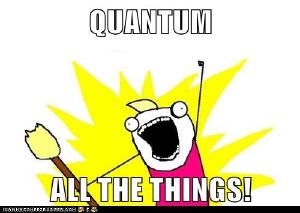Post
Tower of Babble
10 April 2013
 Paramount Pictures
Paramount PicturesScience is about being specific. Scientific terms such as energy, speciation and fusion have very specific meanings within a specific context. These terms often have common meanings as well. If we say that reggae music is a fusion of calypso and jazz, we don’t mean it was created from calypso and jazz nuclei in the core of a star. But while words can have poetic and even multiple meanings, their scientific meanings are precise.
This difference between scientific and general word usage can be difficult to distinguish without practice. When these two uses get mixed up, all sorts of problems occur. The word “theory” is a good example of this. Its common usage is akin to “idea” or “belief,” while its scientific meaning is that of a well-validated scientific model. If something is “just a theory” (idea), it can be easily discarded, but if it is a scientific theory (established model) it can’t. If you are going to discuss theories, you need to know which kind you are discussing.
A popular method of science skeptics is to treat common words as scientific ones. For example, advocates of intelligent design will talk about animal “kinds” (dog-kind, horse-kind, etc.). Their use of the term alludes to the scientific meaning of species, but without the corresponding specificity. Species has definite meaning within biology, but kind does not. As a result, biologists point to nylon-eating bacteria as evidence of evolutionary speciation, while the skeptics dismiss such evidence because the bacteria didn’t change “kind.” Without a specificity of terms, no one can agree on what validates or invalidates a particular hypothesis. Science is about being specific. Without specificity, science would reduce to babble.

Another approach, popular in pseudoscience, is to use scientific terms in vague or incorrect ways. Usually this is done by throwing terminology together almost randomly in a kind of technobabble. If you’ve ever watched Star Trek you know what technobabble is. The Enterprise appears to be doomed, when suddenly Mr. LaForge says “Captain! If we invert the dilithium capacitor, we can shunt the reactor flow into the quantum buffer. This should realign the warp coils thus restoring warp drive!” Well, that sure sounds scientific, but it doesn’t mean anything. Its only purpose is to give a sense of legitimacy to what is really just a deus ex machina plot device. In science fiction, if you write yourself into a corner, technobabble can save the day. Technobabble is a particular peeve of mine, and it is surprisingly common.
A while back at RIT, an advertisement hit the faculty mailing list for a workshop about spiritual healing based on Matrix Energetics® (notice the ®). This started a rather loud banter on the mail-list. Some dismissed it as nonsense, while others defended it. Morbid curiosity led me to check out their website. What I found was this:
Matrix Energetics … is based on the laws and expression of subtle energy physics and the concepts and laws of quantum physics, superstring theory and Sheldrake’s Morphic Resonance.
Quantum physics, morphic resonance, it all sounds so impressive. It sounds so scientific. But these scientific terms are stripped of their meaning and thrown together in a hodge-podge. Technobabble strikes again. Just as technobabble is used in science fiction to numb the viewer’s sense of disbelief, so too is it used in pseudoscience. Scientific phraseology is tossed about, sounding so impressive that it surely must be true. It helps to break down your sense of skepticism.
Sometimes science can sound like technobabble if you are unfamiliar with the terminology. If I start chatting about Brillouin zones and reciprocal lattices it certainly sounds like babble, but these have very specific meanings within solid state physics. Therein lies the difference between science and pseudoscience, and why technobabble peeves me.
Words have power. They can move us, enlighten us or confuse us.
We could do with a little less of the last one.